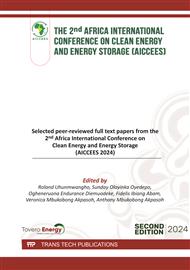p.175
p.195
p.205
p.227
p.245
p.267
p.279
p.291
p.309
Energy Optimization of Wireless Body Area Network(WBAN) Using TDMA Duty Cycling and Thermal Energy Harvesting
Abstract:
Energy harvesting is an effective technique for optimizing Wireless Body Area Network (WBAN) devices used for continuous healthcare services delivery. Despite the growing popularity of WBANs in recent years due to their potential to transform healthcare, energy consumption remains a critical issue. This is due to several factors such as the limited capacity of batteries in smaller sensor nodes, the continuous operation that drains batteries and renders the nodes inoperable, and the impracticality of replacing batteries in situations where the sensors are implanted in the human body and would require surgical procedures to remove them. Thus, the need for research into scavenging, harvesting and utilizing available energy sources. This work proposed energy optimization of WBAN using Time Division Multiple Access (TDMA) duty cycling and thermal energy harvesting. The proposed model aims to enhance energy efficiency in a WBAN using TDMA and Thermoelectric Harvesting (TEH) techniques. At the heart of this model is an IoT controller that runs on a single-sensor activation principle at all times, controls the sensor function and stores the sensor data in its internal memory (buffer), enabling efficient data management and transfer. The TDMA scheduling ensures that multiple sensors are engaged in a coordinated manner whereby a node is enabled only when needed reducing idle time, network collisions and contention, hence contributing to energy savings which is critical to our energy optimization plan. The proposed optimization model shows a 52.40% improvement in the energy conversation of the WBAN device, thus increasing the battery’s useful life by more than 50%.
Info:
Periodical:
Pages:
245-263
Citation:
Online since:
February 2025
Price:
Сopyright:
© 2025 Trans Tech Publications Ltd. All Rights Reserved
Share:
Citation:


